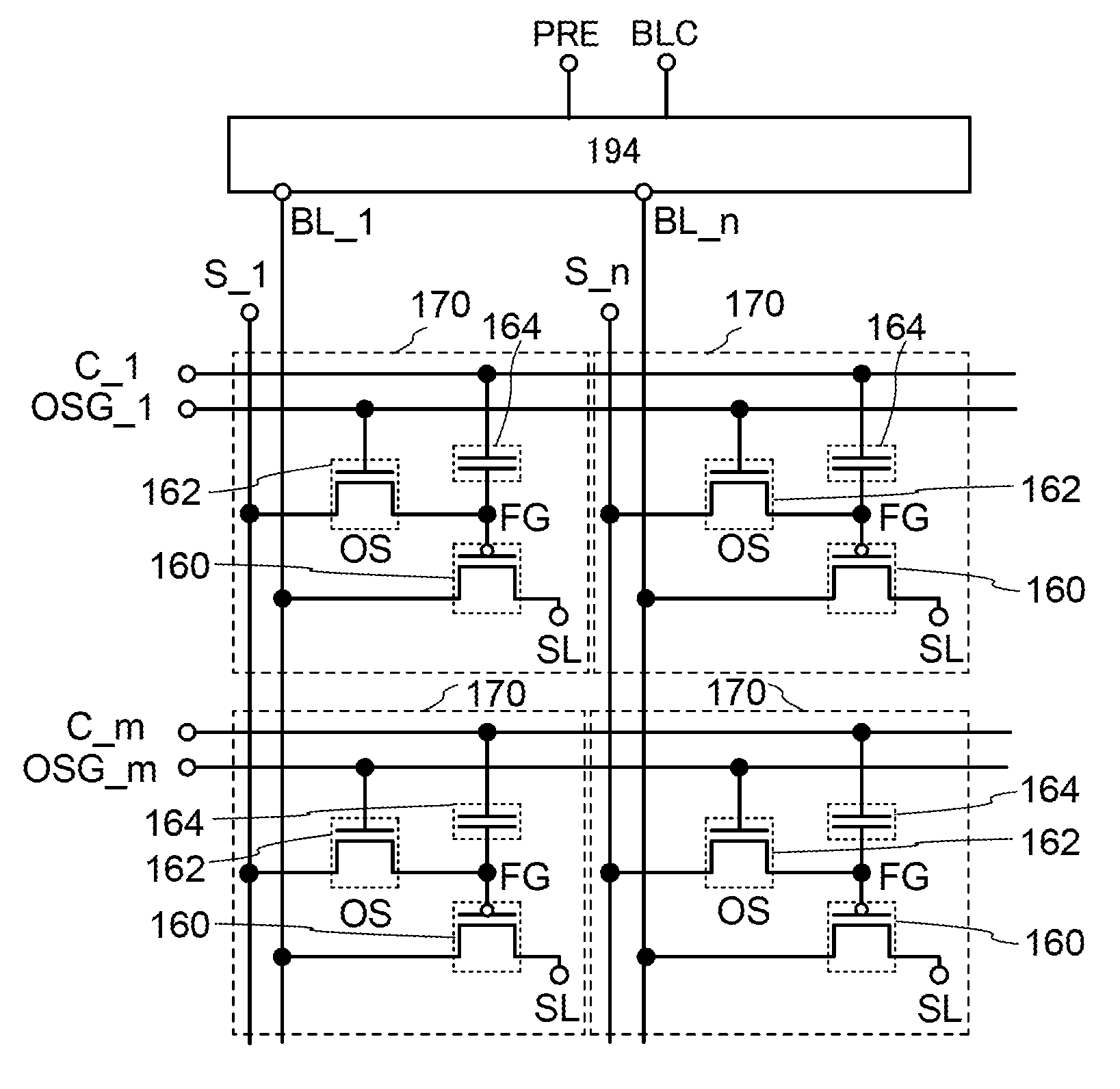Method for driving semiconductor device
- Summary
- Abstract
- Description
- Claims
- Application Information
AI Technical Summary
Benefits of technology
Problems solved by technology
Method used
Image
Examples
embodiment 1
[0064]In this embodiment, circuit configurations and operations of a semiconductor device according to an embodiment of the disclosed invention will be described with reference to FIGS. 1A-1, 1A-2, and 1B, FIGS. 2A and 2B, FIG. 3, FIG. 4, FIG. 5, FIG. 6, FIG. 7, FIG. 8, FIG. 9, FIG. 10, and FIG. 11. Note that in each of the circuit diagrams, “OS” may be written beside a transistor in order to indicate that the transistor includes an oxide semiconductor. The point of an embodiment of the present invention is to provide a semiconductor device including a transistor whose off-state current is very small, and thus, a transistor including a material other than an oxide semiconductor whose off-state current is small may also be used instead of a transistor including an oxide semiconductor.
1>
[0065]First, the most basic circuit configuration and its operation will be described with reference to FIGS. 1A-1, 1A-2, and 1B. In a semiconductor device illustrated in FIG. 1A-1, a source line SL is...
application example 1
[0114]Next, a more specific circuit configuration to which the circuit illustrated in FIGS. 1A-1, 1A-2, and 1B is applied will be described with reference to FIG. 3. Note that the case where an n-channel transistor is used as a writing transistor (the transistor 162) and a p-channel transistor is used as a reading transistor (the transistor 160) will be described below as an example. Note that in the circuit diagram illustrated in FIG. 3, wirings with slashes are wirings each including a plurality of signal lines.
[0115]FIG. 3 is an example of a circuit diagram of a semiconductor device including (m×n) memory cells 170. The configuration of the memory cells 170 in FIG. 3 is similar to that in FIG. 1A-1.
[0116]The semiconductor device illustrated in FIG. 3 includes m (m is an integer of greater than or equal to 2) write word lines OSG, m capacitor lines C, n (n is an integer of greater than or equal to 2) bit lines BL, a source line SL, a memory cell array having the memory cells 170 a...
embodiment 2
[0153]In this embodiment, a structure and a manufacturing method of a semiconductor device according to an embodiment of the disclosed invention will be described with reference to FIGS. 12A and 12B, FIGS. 13A to 13G, FIGS. 14A to 14E, FIGS. 15A to 15D, FIGS. 16A to 16D, FIGS. 17A to 17C, FIGS. 18A to 18E, FIGS. 19A to 19C, FIGS. 20A to 20C, FIGS. 21A and 21B, FIG. 22, FIGS. 23A to 23C, FIGS. 24A to 24C, FIGS. 25A to 25C, FIGS. 26A and 26B, FIGS. 27A and 27B, FIG. 28, FIG. 29, and FIGS. 30A and 30B.
[0154]In FIGS. 12A and 12B, an example of the structure of the semiconductor device is illustrated. FIG. 12A is a cross-sectional view of the semiconductor device, and FIG. 12B is a top view of the semiconductor device. Here, FIG. 12A corresponds to a cross section taken along lines A1-A2 and B1-B2 of FIG. 12B. The semiconductor device illustrated in FIGS. 12A and 12B includes a transistor 160 including a first semiconductor material in a lower portion, and a transistor 162 including a se...
PUM
 Login to View More
Login to View More Abstract
Description
Claims
Application Information
 Login to View More
Login to View More - R&D
- Intellectual Property
- Life Sciences
- Materials
- Tech Scout
- Unparalleled Data Quality
- Higher Quality Content
- 60% Fewer Hallucinations
Browse by: Latest US Patents, China's latest patents, Technical Efficacy Thesaurus, Application Domain, Technology Topic, Popular Technical Reports.
© 2025 PatSnap. All rights reserved.Legal|Privacy policy|Modern Slavery Act Transparency Statement|Sitemap|About US| Contact US: help@patsnap.com



